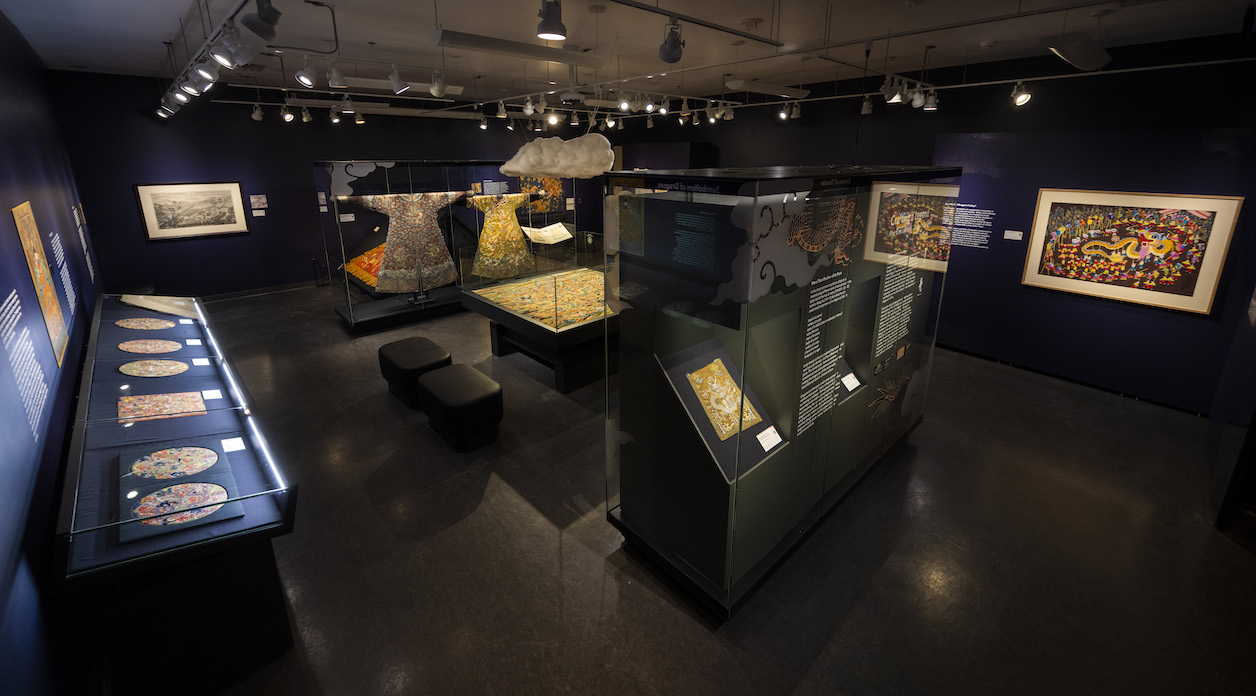Dr. Isabel Chueh started her career studying textile design at university in Taiwan. Through her subsequent textile work, she fell in love with ancient Chinese designs, and has spent the rest of her life researching their evolving histories — including as curator of textiles at the National Palace Museum in Taiwan. But six years ago she caught a bad bout of western wanderlust, and took flight to Canada. “It was a challenge for me,” she smiles, “but at 55 years old I thought: This is my last big adventure!”
She landed at the University of Alberta and started her adventure as curator of the Mactaggart Art Collection, where she was pleasantly surprised to find a huge collection of Chinese dragon textiles — “more than I had seen before in my research, or when I was in Taiwan or China.” This being the year of dragon, Chueh says she’s “very motivated to display dragon history to the west.”
Due to China’s truly ancient history, the true origin of the dragon — which Chueh calls the country’s “most attractive and significant design” — is untraceable. So she explores Chinese texts and archives to find the oldest descriptions possible, and map what they looked like before they were ever drawn.
So, what did the earliest dragons “look” like?
“They looked like lightning,” Chueh says. “People thought they controlled the rain, that they came from the clouds and could dive deep into the sea.” Unlike our modern, western perception of dragons as monsters, the earliest texts describe them as benevolent, spiritual beings that were only turned into authority figures in the 14th century by the Ming Dynasty. “They set laws and regulations saying only the emperor could use the dragon pattern on their garments, so people began to recognize the dragon as representing authority, but it’s not the origin of the dragon.”
Echoes of Thunder immerses you in this history as soon as you walk into the gallery’s thunder-and-lightning foyer. Once you enter the exhibit, you see artifacts and art covering the exhibit’s three topics: the earliest dragon images, the dynastic symbolism (and the ways artisans modified their dragon drawings to avoid punishment), and the part Chueh finds most interesting, when artists rendered dragons so as to “imitate human posture, [start] dancing, or [doing] martial arts.”
